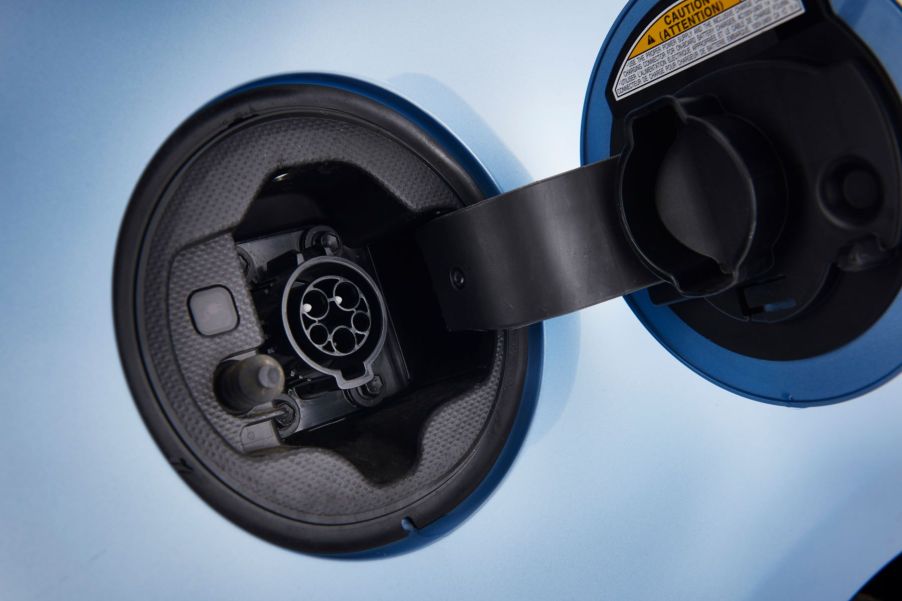
37% of Americans Think That Hybrid Vehicles Need to Be Plugged in to Charge
Hybrid vehicles have been in the automotive market for decades, but not everyone understands how they work. When a hybrid’s electric motor/generator engages in regenerative braking, it slows the vehicle and charges its batteries at the same time. But this is far from universal knowledge. A recent survey revealed that a whopping 37% of Americans believe hybrids need to be plugged in to charge.
The basics of hybrid-electric vehicles

One of the most common questions asked of Consumer Reports is whether or not hybrid vehicles need to be plugged into an outlet to charge. Because regenerative braking recharges a hybrid’s high-voltage “traction battery” it can charge without plugging in. Apart from PHEVs, you actually can’t plug in most hybrids.
Yet, 37% of drivers CR surveyed didn’t know this. Around 45% of respondents to the recent CR survey already knew this, and 18% were unsure if hybrids needed to be plugged in.
A hybrid vehicle couples a gasoline engine with at least one electric traction motor to propel the car. Each electric traction motor is connected to a high-voltage traction battery that captures energy from the braking process. Electric motor batteries are separate from the low-voltage battery that starts the engine.
High-voltage batteries in a hybrid car are replenished by friction, and practically all hybrids get along fine without ever being plugged in, explains Car and Driver magazine.
At low speeds, the electric motor moves the vehicle on its own. As it accelerates, the gas engine and electric motor beging working together . At higher speeds, the gas-powered engine takes over.
What’s under the hood of a hybrid car?
Ferdinand Porsche invented the first hybrid car in 1898, but the idea didn’t readily catch on. A century later, vehicles powered by a blend of gasoline and electricity were made available to the general public when Toyota debuted the world’s first mass-produced hybrid electric vehicle, or HEV.
According to the U.S. Department of Energy Alternative Fuels Data Center, you’ll find the following under the hood of an HEV car:
- Auxiliary battery
- DC/DC converter
- Electric generator
- Electric traction motor
- Exhaust system
- Fuel filler
- Fuel tank
- Power electronics controller
- Spark-ignited internal combustion engine
- Thermal cooling system
- Traction motor battery pack
- Transmission
What you won’t find anywhere in a hybrid car is an alternator. The electric generator produces all the voltage required by the vehicle, explains Plug-In Car World.
Is owning a hybrid vehicle different from owning a gas-powered/ICE car?
Most modern cars are powered by internal combustion engines fueled with gasoline or diesel. More than 100,000 gas stations pepper roadways from coast to coast; many are open all night. No matter where you go in the U.S., chances are good you can fill your tank anywhere, any time.
This isn’t the case with all-electric vehicles (EVs). If, for instance, you drive a Tesla around town, you’ll need to avail yourself of a charging station every 300 miles or so. A hybrid with both an electric motor and a gas engine can fuel up on gas anytime, even when no charging station is available. So, the expereince of driving a hybrid vehicle is similar to a regular car. Although they are not as common as EV and hybrid vehicles, plug-in hybrid electric vehicles, or PHEV, are a viable option for drivers who don’t always have reliable access to EV charging stations.
Because it has an internal combustion engine under the hood, HEVs require maintenance such as oil changes that ICE drivers are used to. Insurance rates may be higher for EVs and HEVs than for gas-powered cars, says Progressive.
Next, learn the truth about hybrid maintenance costs or see hybrid powertrains explained in the video below:
Editors note: The first draft of this article was written by Kaanii Powell Cleaver. It has since been revised with the latest information.



